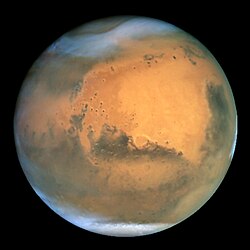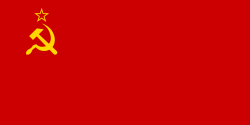Fobosprogrammet
Fobosprogrammet (ryska: Фобос, som betyder Phobos) var ett rymdprogram som hade till uppgift att studera Mars och dess månar Phobos och Deimos. Fobos 1 och Fobos 2 var två rymdsonder som skickades upp av Sovjetunionen.
Den 7 juli 1988 sköts Fobos 1 upp och den 12 juli 1988 sköts Fobos 2 upp.
Fobos 1 förlorades den 2 september 1988 på grund av ett programmeringsfel som gjorde att rymdsonden vände sina solfångare från solen vilket resulterade i att batterierna tömdes.
Fobos 2 nådde Mars och samlade in data om planeten och dess måne Phobos. Strax före den sista delen av uppdraget, då rymdsonden skulle flyga på en höjd av 50 m ovanför ytan och landsätta två landare, en 50 kg mobil enhet (en "groda"[1]) och en stationär plattform, förlorade man kontakten med rymdsonden. Den 27 mars 1989 avslutades Fobosprogrammet eftersom man inte längre kunde få kontakt med Fobos 2.
Källor
- ^ Origin of the Phobos mission Arkiverad 22 december 2013 hämtat från the Wayback Machine.
| ||||||||||||||||||||||||||||||||||||||||||||||||||||||||
| ||||||||||||||||||||||
Media som används på denna webbplats
NASA's Hubble Space Telescope took the picture of Mars on June 26, 2001, when Mars was approximately 68 million kilometers (43 million miles) from Earth — the closest Mars has ever been to Earth since 1988. Hubble can see details as small as 16 kilometers (10 miles) across. The colors have been carefully balanced to give a realistic view of Mars' hues as they might appear through a telescope. Especially striking is the large amount of seasonal dust storm activity seen in this image. One large storm system is churning high above the northern polar cap (top of image), and a smaller dust storm cloud can be seen nearby. Another large dust storm is spilling out of the giant Hellas impact basin in the Southern Hemisphere (lower right).
A replica of Sputnik 1, the first artificial satellite in the world to be put into outer space: the replica is stored in the National Air and Space Museum.






